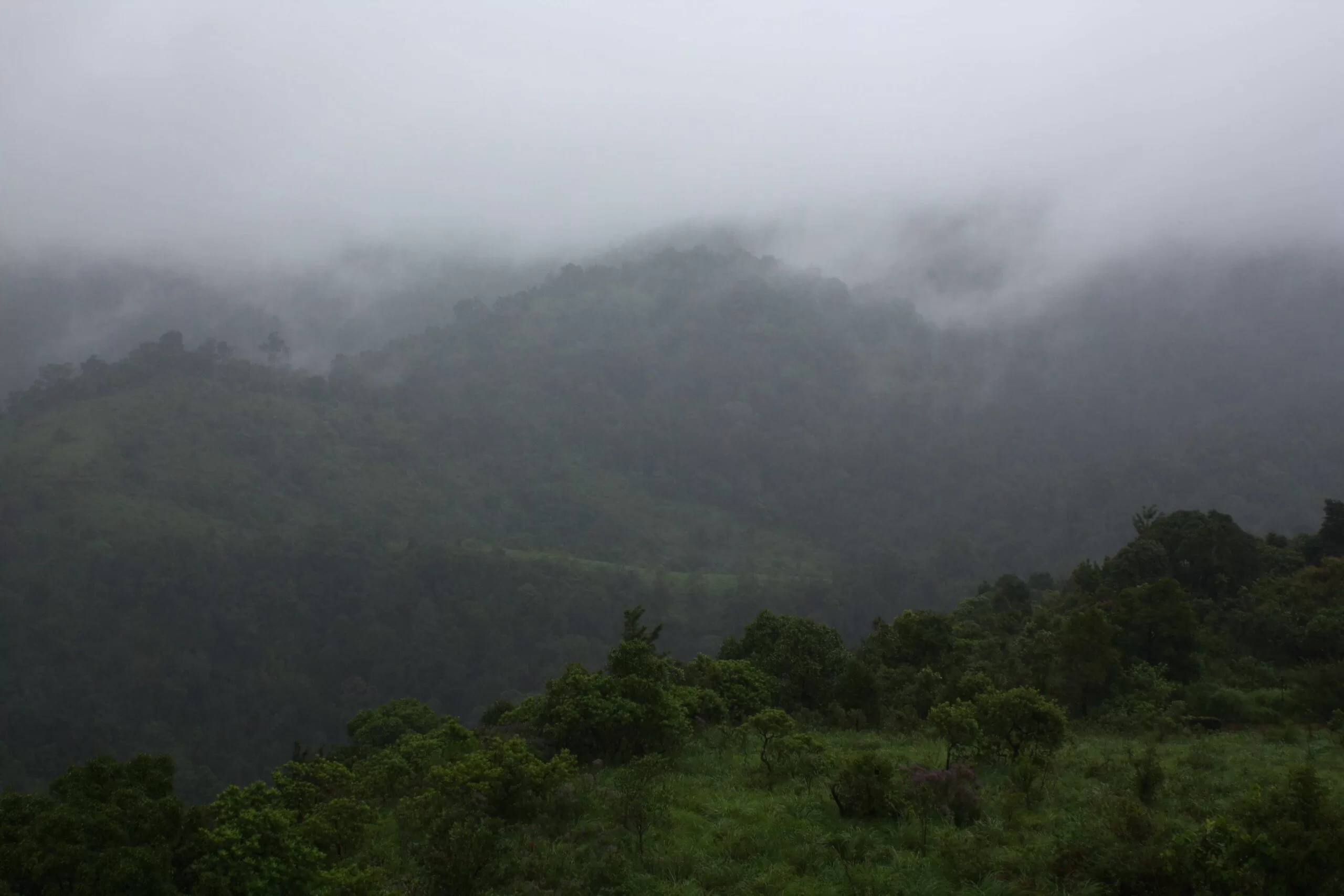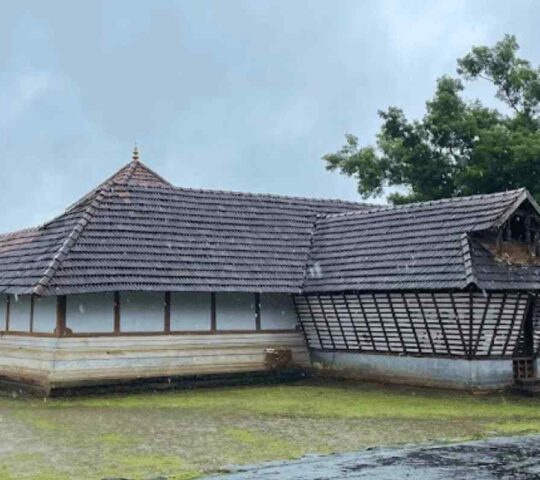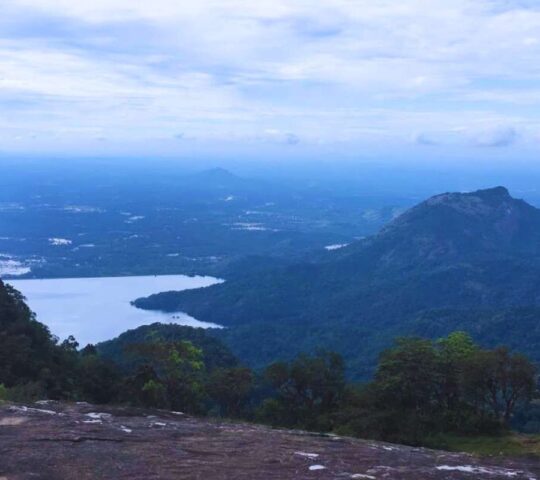Hightlight
-
 Non smoking
Non smoking
-
 Car parking
Car parking
Silent Valley National Park is a national park in the Palakkad district of Kerala, India. The park is surrounded by a buffer zone in the Nilgiri hills and has several uncommon species of flora and fauna in this national park. Silent Valley National Park is a pristine rainforest with rich biodiversity that includes endemic and endangered species.
Read More
At a Glance
| Topic | Information |
|---|---|
| Name of the Park | Silent Valley National Park |
| Location | Palakkad district, Kerala, India |
| Tribal Communities | Kurumba, Muduga, Irula, and Kattu Naiken |
| Notable Fauna | Lion-tailed macaque, Nilgiri langur, Nilgiri tahr, Malabar giant squirrel, Nilgiri marten, Great Indian hornbill |
| Activities | Wildlife Safari, Trekking, Camping, Natural trail, etc. |
| Visiting Hours | 9 AM to 1 PM |
| Best Time to Visit | October to February |
| Entry Fee | INR 25; Additional charges for Cameras & Parking |
| How to Reach | By road from Mannarkad, KSRTC bus services are available. The nearest major railway station is Palakkad railway station, and the closest airport is Calicut International Airport. |
A UNESCO Heritage Site and Tribal Haven
The park has a core area of 89.52 km2, is surrounded by a buffer zone of 148 km2, and is part of the Western Ghats mountain range recognized as a UNESCO World Heritage Site. The park was explored in 1847 and declared a reserved forest in 1914. The park faced a hydroelectric dam construction proposal in 1973, which was successfully opposed by an environmental movement called Save Silent Valley, and the park was declared a national park in 1984. The park was formally inaugurated in 1985 by then-Prime Minister Rajiv Gandhi.
Silent Valley National Park is surrounded by several tribal communities, including Kurumba, Muduga, Irula, and Kattu Naiken. These communities primarily practice agriculture and often rely on shifting cultivation to ensure soil fertility and save labor. They cultivate various crops such as ragi, chaama, mustard, dal, banana, ginger, pepper, and maize. They also collect non-timber forest produce like honey, gooseberry, black dammar, and tubers from the forest, but this is not allowed in the core zone of the park.
To facilitate outreach and welfare activities, the park has established six Eco Development Committees (EDCs), four of which are based on separate tribal settlements. The park’s presence has become an ecological umbrella for the surrounding communities, and they feel that their environmental needs are being taken care of by the park’s existence nearby, which helps in its management.
Flora and Fauna of Silent Valley National Park
Silent Valley National Park boasts a vast range of flora and fauna, having recorded over 1000 species of plants, 34 species of mammals, 200 species of birds, 31 species of reptiles, 22 species of amphibians, and 128 species of butterflies so far. Among the notable species that can be found within the park are,
- Lion-tailed macaque: an endangered primate endemic to India.
- Nilgiri langur: a large monkey that feeds on leaves, fruits, flowers, and seeds in troops of up to 20 individuals,
- Nilgiri tahr: a rare and endangered mountain goat that grazes on grasses and herbs in herds of up to 100 individuals at high altitudes.
- Malabar giant squirrel: one of the world’s largest squirrels that feed on fruits, nuts, seeds, and insects in pairs or small groups in the upper canopy of the rainforest.
- The Nilgiri marten: a small carnivore belonging to the weasel family that hunts for rodents, birds, reptiles, amphibians, and insects either alone or in pairs in the dense forest.
- Great Indian hornbill: one of India’s largest and most stunning birds with black and white plumage, yellow neck, and a large casque on its bill that feeds on fruits, seeds, small animals, and carrion in pairs or small groups in the high canopy of the rainforest.
Trek, camp, and safari at Silent Valley National Park
Silent Valley National Park boasts a multitude of activities for tourists seeking to explore its natural splendor. These include:
- Nature trail: This 1 km long trail is led by a guide and showcases the diverse flora and fauna of the park, beginning at the Sairandhri visitors’ center and ending at the Kunthipuzha river.
- Wildlife Safari: Tourists can witness the park’s vast wildlife, such as elephants, tigers, leopards, lion-tailed macaques, Malabar giant squirrels, Nilgiri langurs, and many others by taking a jeep or bus safari. Additionally, visitors may spot rare birds, butterflies, and moths that call the park home. The safari culminates at the watchtower, which provides a stunning view of the valley.
- Trekking: Adventurous visitors may choose from several trekking trails through the dense forest, along the Kunthi river, and to scenic viewpoints. Overnight camping options are available at designated sites such as Keerippara and Boommiyampadi. Trekking in Silent Valley National Park is an unmatched way to appreciate the serene beauty of nature.
Wanna explore more? Check out the nearby attractions.
Plan Your Visit
Silent Valley National Park is an ideal destination for visitors seeking a serene and adventurous getaway. It is open for visitors from 9 AM to 1 PM every day, the best time to visit is from October to February when the weather is pleasant and most suitable for activities. Visitors can reach the park easily by road, it is located about 9 kilometers away from Mannarkad, and there are KSRTC bus services from Mannarkkad to Silent Valley. The nearest major railway station is Palakkad railway station, located 38 kilometers away, and the closest airport is Calicut International Airport, located about 55 kilometers away.





